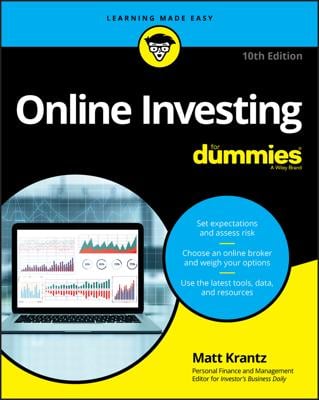The Federal Reserve’s Regulation T is one of the key restrictions in the SEC arsenal of tools for controlling day trading. Rules related to the settlement of stock transactions and borrowing from others to meet margin requirements also limit what day traders can do.
The Fed’s Regulation T: Margin requirements
The world of day trading became much more restricted in August 2001 when amendments to Regulation T were approved that focus on pattern day traders. Your broker and the Financial Industry Regulatory Authority (FINRA) consider you a pattern day trader whenever you buy and sell (or short and cover) any security on the same day within a margin account four or more times during any rolling five-day period.
Days when the markets are closed — Saturday, Sunday, and market holidays — are not included when calculating the rolling five-day period.
After you’re designated a pattern day trader, you’re required to maintain a minimum of $25,000 of equity in your margin account before you’re ever permitted to do any more day trading. For most day traders, that means having at least $25,000 in cash at the end of every trading day.
This limitation can impact other investing activities in your account, so if you’re considering day trading, be sure to talk with your broker to gain an understanding of the impact that margin account minimums have on other stock transactions you may want to make within your account.
After you’ve been designated as a pattern day trader and maintain the $25,000 minimum in your margin account, you’re entitled to borrow up to four times any amount you maintain in your margin account.
For example, if you maintain $50,000 in your account, this gives you up to $200,000 of day-trading buying power. But remember, this extra buying power is limited only to intraday trades. If you hold positions overnight, you cannot take advantage of the day-trading margin when opening a position. You must adhere to the traditional 50 percent initial margin requirements.
Typically, day traders are flat, or back into a cash position by the end of the trading day for all day trades; otherwise, you risk a margin call. When this occurs, you have at most five days, but some brokers require payment in fewer days, to meet the call. If you fail to meet the margin call, your account will be restricted to traditional margin requirements.
Although brokerage firms are not required to monitor whether day-trading accounts fall below the $25,000 minimum throughout a given trading day, customers must cover any losses incurred in their accounts from the previous day’s trades before they’re allowed to continue day trading. If a day trader exceeds the four times leverage rule during the day, a brokerage firm can impose additional restrictions on the account.
Members of FINRA are required to issue day-trading margin calls to pattern day traders who exceed their day-trading buying power. Traders then have five days unless their broker has stricter rules to meet these calls. Until a margin call is met, the day-trading account’s buying power is restricted to traditional margin requirements, which allows the day trader to leverage equity only two times.
For example, if a day trader has $50,000 of equity but the account is restricted due to exceeding buying-power constraints, the day-trading buying power is only $100,000. These stricter requirements begin on the trading day after buying power is exceeded and stay in place until the trader either meets the call by depositing the necessary cash or securities or until five business days have passed.
After five business days have passed and the day trader still has not met the call, the day trader is limited to trading only on a cash-available basis for 90 days or until the call is met.
Traders can’t meet the call and then just take the money right out again. Funds deposited to meet the call must be left in the account for at least two business days. Traders also can’t use cross-guarantees (guarantees from third parties) for the margin call. The cash or securities must be deposited directly in the account.
Settlement
An official stock transaction is settled three days after the date of the trade, meaning that day traders frequently are buying and selling stocks before their transactions are officially settled.
Day traders can’t free ride, meaning they can’t buy a security and sell it an hour later without first having enough funds to cover the settlement of the initial trade. If a trader buys a stock or other security, he or she must have the funds to cover the initial trade even if the security is sold for a profit within the same day.
A margin account with leverage of four times excess equity is what enables day traders to get around this rule. All the trader needs to have is sufficient cash to pay for the shares or sufficient reserve in his or her margin account. Brokers can restrict use of margin funds for three days until a stock transaction is settled, but they’re not required to do so.
Before trading, be sure that you understand the restrictions your broker imposes on margin accounts related to stock transaction settlements. The settlement time for options is the next day, as opposed to the three-day waiting period for stocks. To trade using options, funds must be in the account before you place the trade or you’ll be stuck wiring funds around, which can add plenty to the costs of your trading.

